The name Costa Brava literally means ‘rugged coast’, a reference to the spectacular cliffs and hundreds of coves that line the coast. While the coast is a perennial favourite amongst many Europeans looking for sun, sand and sangria, there’s a lot more to discover starting just a few miles inland in the Baix Empordá region and further inland in the hills of the Garrotxa Volcanic region, such as the gorgeous medieval towns and villages. Steeped in history and home to well-preserved medieval architecture, these Costa Brava towns and villages each have their own charm and attractions. Due to the short distances, many of them can easily be explored by means of a leisurely day trip from any point in Costa Brava.
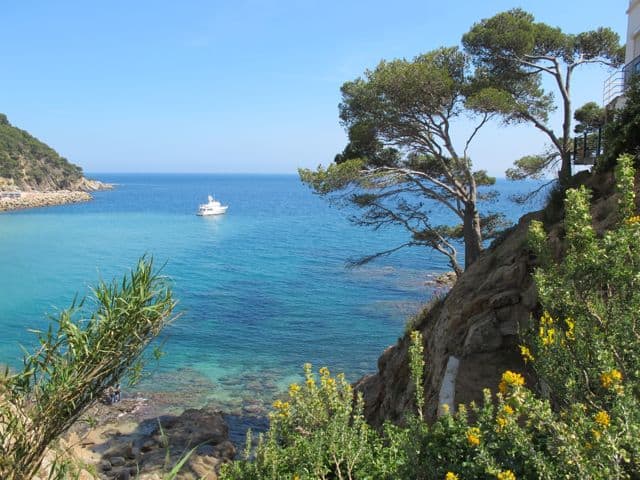
Where to go in Costa Brava for medieval towns and delicious cuisine
There are dozens of places to visit in Costa Brava for medieval history and fantastic cuisine but I’ve highlighted five; three near the coast and two in the hills of the Garrotxa. I’ve also added additional tips for things to do and see in the vicinity of these medieval Costa Brava towns, including some of my favourite restaurants.
Car hire is available in almost every major town, making it a breeze to discover the many historic, cultural and gastronomic highlights that Costa Brava has to offer.
Begur and the coast
Begur is a colourful hillside town overlooked by a beautifully restored 16th century castle. It’s a popular town, especially in the summer, due to its proximity to the beaches and a variety of summer festivals. There’s a lovely square, packed with terraces, and cobblestone alleys with a good choice of restaurants and cafés, some tucked away in beautiful courtyards.
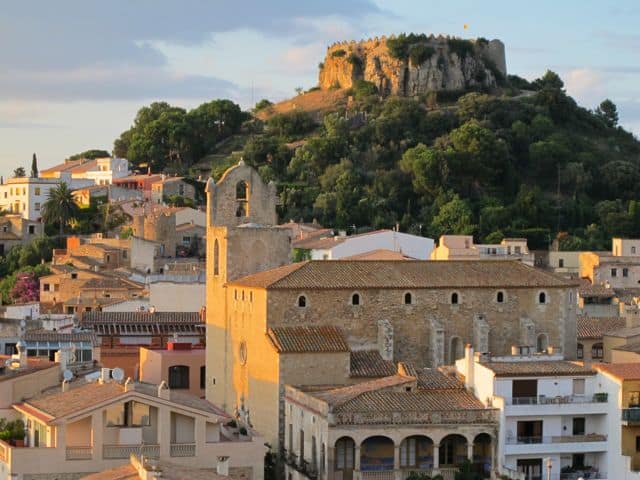
From Begur, take the road to Sa Tuna, a hamlet on the coast with a small beach. The road winds through quiet neighbourhoods and thick forests, and offers beautiful vistas of the rugged coast. Check out the fabulous Cap Sa Sal, a fabulous place to stay.
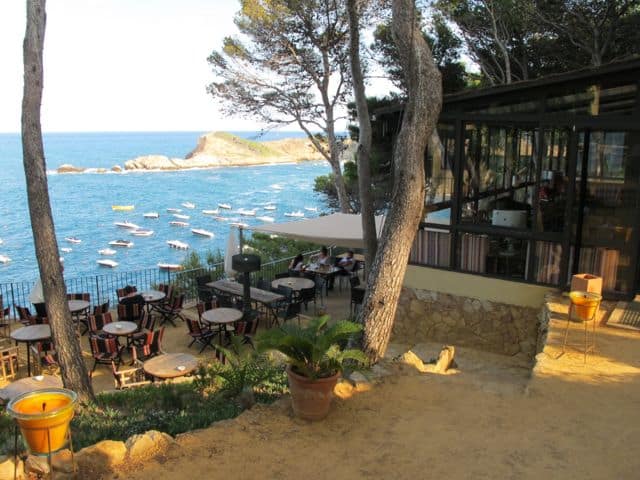
Hotel Aigua Blava, one of my favourite hotels on the Costa Brava is located a 15-minute drive away from Begur. It’s a great base from which to explore the coast: the famed Camins de Ronda or the Costa Brava coastal trail passes the hotel’s front entrance; and it is along the trunk road that connects the towns of Begur, Tamariu, Llafranc and Palafrugell. Check rates for Hotel Aigua Blava (Booking.com).

For an amazing gastronomic experience with a spectacular view, head for El Far, a restaurant and hotel located on a clifftop near Llafranc, a short drive from Begur. The food (local Catalan and Empordá fare) is absolutely divine and the view of the blue Mediterranean is unforgettable.

Cap de Creus
The Cap de Creus (map) peninsula is a rocky, mountainous region of wind-swept slopes covered by thick gorse; quaint coastal villages; and crystal-clear coves. The mountains extend from the snow-capped peaks of the Pyrenees to the turquoise coast of the Mediterranean sea and are now part of the Cap de Creus national park. The rugged natural beauty of the Cap de Creus peninsula was a major source of inspiration for one of the greatest artists of our time, Salvador Dalí, who lived in nearby Port Lligat. Places to visit on the peninsula include the gorgeous harbourside town of Cadaqués and the imposing Sant Pere de Rodes monastery. Read more about Cap de Creus.

Pals
Pals is one of the most impressive medieval towns in the Costa Brava. Situated in the Baix Empordá, a short distance from Begur and a few kilometers from the coast, Pals’ main attraction is its beautifully restored medieval quarter. Dominated by the Torre de les Hores, an 11th century Romanesque tower, the medieval quarter features quaint alleys lined by ancient stone houses and charming squares. The medieval town wall with its four towers offers stunning views of the Empordá countryside.
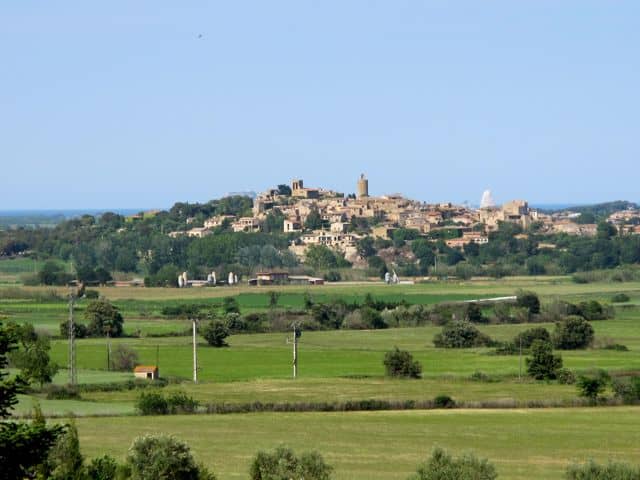
Pals is also the location of one of my favourite restaurants in Costa Brava. If you’re looking for a casual dining experience with simply fabulous food, I highly recommend Vicus. Situated at the corner of the main road that leads into the centre of Pals (if you’re approaching from Begur), Vicus serves Catalan fare with a modern twist in a contemporary ambiance.
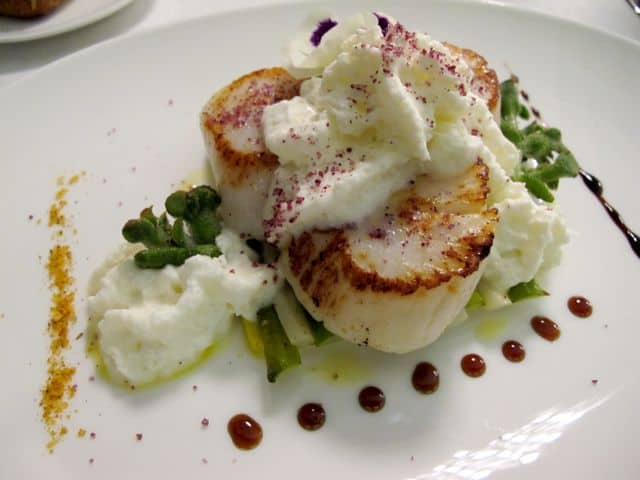
Peratallada
Peratallada is a small, fortified medieval town in the Baix Empordá region. The town, with its 11th century castle (now home to a luxury hotel), 13th century Romanesque church, gorgeous cobblestone streets and picturesque squares, is an absolute delight. It’s a popular place for day-trippers who come here to soak up the medieval atmosphere but stick around in the evenings for a romantic dinner at one of the numerous restaurants.

For a dose of indulgence, I highly recommend the Mas de Torrent Hotel and Spa, the Costa Brava’s most luxurious hotel, which is situated a short drive away from Peratallada.
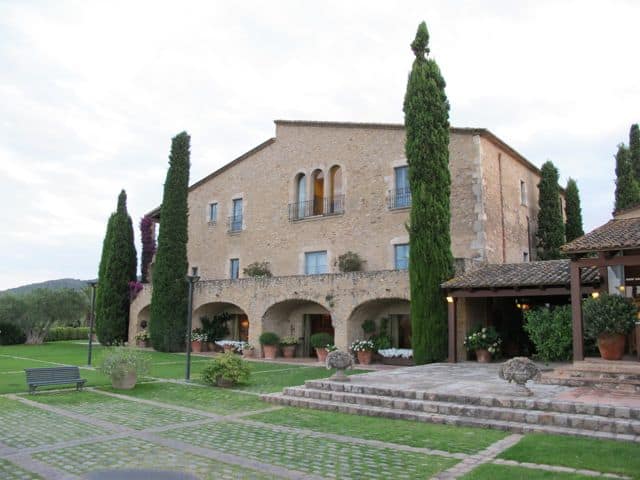
Other medieval towns in the Empordá region that are worth a visit include La Bisbal (with its castle, Jewish quarter and porticoes – it’s also a centre of ceramics and pottery) and the nearby villages of Monells, with its gorgeous medieval square lined by beautiful arches, and Púbol, home of the Gala Dalí castle.
Girona
Girona is the largest city in the Costa Brava region. Often overlooked by tourists, it’s a gorgeous medieval city located smack in the middle of the confluence of four rivers. As a consequence of its strategic location, Girona became a wealthy trading town centuries ago and was occupied at different times in its history by the Romans, Visigoths, Moors and the French. The city remains till this day one of the wealthiest in Spain and boasts a myriad of historical and cultural attractions that can easily keep visitors occupied for days.


If you’re a Game of Thrones fan, you may recognise several of the city’s most important monuments. Girona is also home to El Celler de Can Roca, constantly voted as one of the best restaurants in the world (read about my visit to Celler de Can Roca). One thing you shouldn’t miss is a walk along the Girona medieval walls. Read about things to see and do in Girona.

Besalú and the Garrotxa region
Besalú is a stunning medieval town in the hills of the Garrotxa region. The first thing that will grab your attention as you approach the town is the magnificent 12th century Romanesque bridge over the Fluviá river. The bridge leads visitors into the town, with its arcaded streets, cobblestone alleys and squares. There’s a wonderful array of shops selling local produce and handicraft – my favourite shop, at 10, Pont del Besalú, sells all sorts of tea, coffee and chocolates. Other historic monuments in the town include the 11th century Sant Pere church and 12th century Jewish bath (mikveh).


Santa Pau is another medieval village in the Garrotxa region that I absolutely love. Located near the Garrotxa Volcanoes, Santa Pau is tiny but boasts gorgeous porticoes, alleys and arcades as well as a 15th century Gothic church. Moreover, this wonderfully atmospheric village is home to another of my favourite restaurants in the Costa Brava: Cal Sastre.


You can easily combine a visit to Besalú with the Garrotxa Volcanoes and Santa Pau. From Besalú, follow the A26 motorway in the direction of Olot. Take the Castellfollit de la Roca exit to see this stunning clifftop village, then continue along the A26 motorway to Olot or Santa Pau.

Read about my experiences at the Terra de Trobadors medieval festival in Costa Brava.
The best time to visit Costa Brava is in May/June or in September/October. This way, you avoid the summer crowds and you’ll truly get to enjoy the natural, historical and culinary highlights of Costa Brava at a leisurely pace. I’ve pinned the locations of the places mentioned above in the map below. I hope it helps you to discover some of my favourite medieval towns in Costa Brava.
This itinerary can easily be combined with my idea of: the ultimate Euro food trip.
Costa Brava is located about a 1.5 – 2 hour drive north of Barcelona. There are also frequent bus and train services from Barcelona to various points in Costa Brava. Search for flights to Barcelona with KLM.

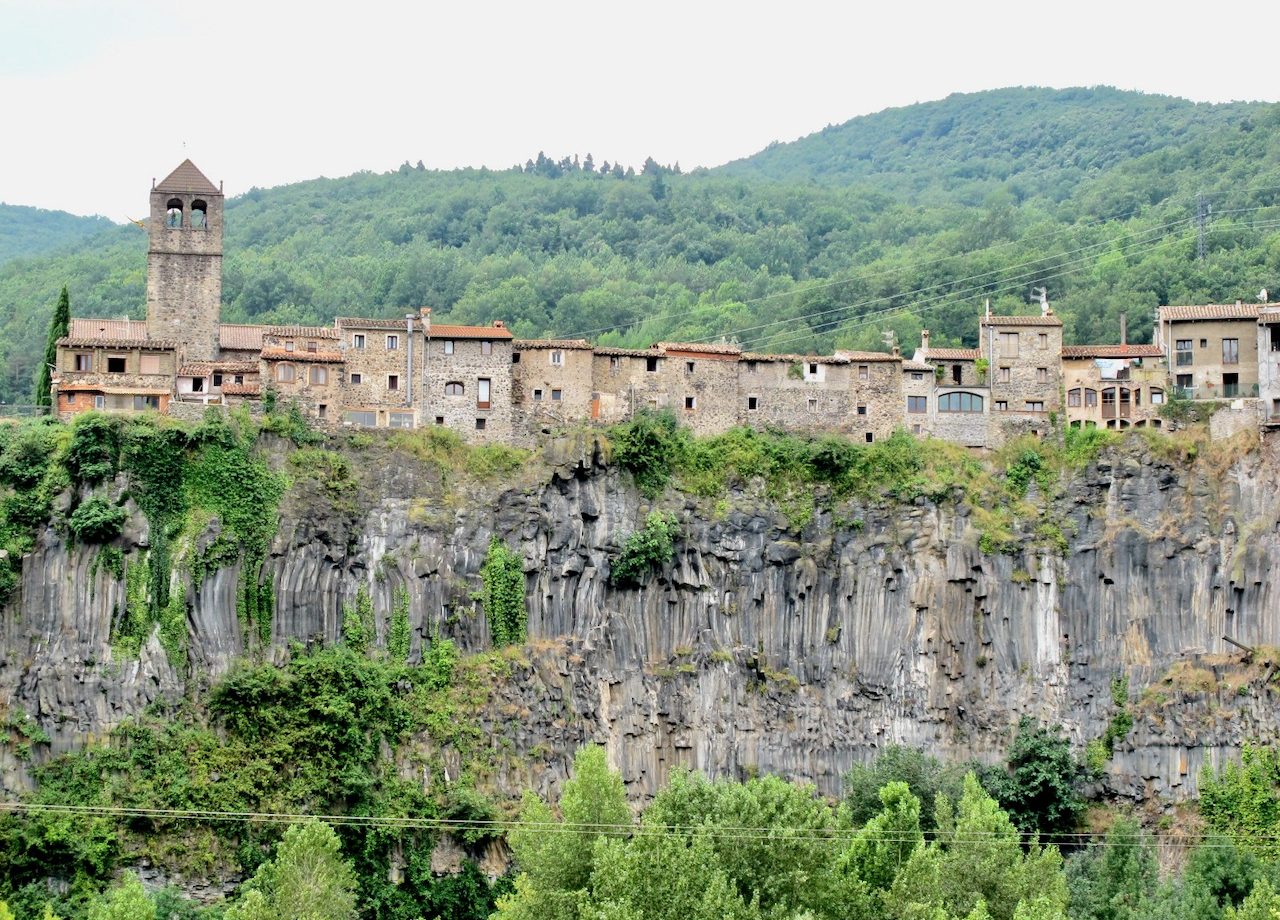











[…] about the medieval towns and gastronomy in Costa Brava, […]
[…] Medieval towns in Costa Brava […]
[…] about the medieval towns in Costa Brava, […]
[…] about the medieval towns in Costa Brava, […]
Hi Asha,
Thanks for your comment. I’m glad you enjoyed your first visit to my blog.
Keith
Hi Keith,
This is my first visit to your blog. I like your article about the costa brava with great information. These places are absolutely gorgeous. I really enjoyed reading. I want to read more about blogs.
Thanks for sharing an amazing post.
Have a great week ahead.
Great article! Covers many of the best places but I like so much Begur
[…] been following me for some time, you’ll know how much I love medieval towns (such as these in Costa Brava or Bergamo in Italy), and Erfurt is a stunning example! I visited the city as part of a tour […]
[…] reading this blog for some time, you’ll know how much I love medieval towns (such as these in Costa Brava or Bergamo in Italy), and Erfurt is a stunning example! I was really bummed that we were only […]
[…] Check out my favourite medieval towns in Costa Brava. […]
[…] Read about my favourite medieval towns in Costa Brava. […]
[…] Read other Costa Brava posts on Velvet Escape or view the Velvet Escape Costa Brava guide on Pinterest. Check out my favourite medieval towns in Costa Brava. […]
[…] Read other Velvet Escape posts on Costa Brava. Or look up other active things to do in Costa Brava. Check out my favourite medieval towns in Costa Brava. […]
[…] Read other Velvet Escape posts on Costa Brava. Check out my favourite medieval towns in Costa Brava. […]
[…] one of my visits to Costa Brava (the region north of Barcelona), I visited the Marrecs de Salt casteller group at their school in […]
I’ve just come back from this area of the Costa Brava and loved it – so many quiet coves on the coastline plus beautiful areas inland. I’d highly recommend the Sa Punta Hotel & Restaurant in Platja de Pals – amazing service, great swimming pool and the food was the best I had all week. I didn’t find La Bisbal massively worth the visit – it was very quiet and less scenic than other villages. Torroella de Montgri is a good alternative, with a medieval grid plan of streets.
You’ll love it! Enjoy TBEX! 🙂
Peratallada looks so pretty – as they all do. I’m so excited I’ll finally get to check out this area at TBEX Costa Brava.
[…] more about medieval towns in Costa Brava or visit the Velvet Escape Costa Brava […]
Hi Mike,
Gosh, I haven’t heard of Rupit. Will have to check it out next time I’m there. I did indeed visit Cadaques twice. Loved it!
Cheers,
Keith
Great article! Covers many of the best places in Costa Brava. If you ever go back try Rupit (my favorite inland town), and you must have visited Cadaques already, no?
Keep up the great writing and information!
Europe’s awesome isn’t it? So many different worlds, so much culture.
[…] Costa Brava is more than a beach-goer’s paradise. It’s also chock-full of lovely Medieval villages with ancient (and well-preserved) histories. Here are five worth visiting. @velvetescape […]
[…] the accompanying post: “Medieval Towns and Gastronomy in Costa Brava“. Pals var dd_offset_from_content = 25; var dd_top_offset_from_content = 0; […]
Just got back from Costa Brava. We love this area. WE stayed in Ullastret. It is the perfect combination of mountains, farms, sea, art, architecture and food….and of course, let’s not forget the wonderful Catalan people. We went to the beach, we saw Dali,. medieval towns, markets, took a boat reid thru the caves and enjoyed great meals at a responsible price. SO Keith, does area north into France compare or is it Costa Brava all the way!
Best
MArguerite
Thanks for this post – really helpful for planning my trip to Spain!
Llafranc is one of the best beaches in the Costa Brava for indulging in seafood, and soaking up the romance of the sea (it has spectacular views of the cliffs and boats). This area is very popular with French tourist during the summer, so you can be assured of great cuisine. My favourite times to visit here are in May to indulge in a glass of cava, fine dining and enjoy some boating. I also love to travel here in December, eating the excellent oysters and lobster which are at their finest then, washed down with a glass of the excellent local port produced in Catalunya.
beautiful place.. and you could easily be a food blogger too! gorgeous drool worthy pictures! well done!
There is so much hidden in the small little towns in Catalunya! The best part about discovering these towns is enjoying the wonderful food they have to offer! In spite of living Barcelona, I still haven’t visited Begur- will definitely plan a weekend getaway!
These places are absolutely gorgeous and I always enjoy visiting places with lots of medieval history. I really have to see this part of Spain when I get a chance – Peratallada particularly sounds great!
Makes me want to visit again right away! I have been to many of these places 20 years ago and am pleased to see that they haven’t really changed all that much; on the contrary, the area seems to be much more “cleaned up” and oh so lovely….
Beautiful area. I can’t get enough of these little medieval towns!
Hi Ron,
I’ve been there several times now but I’ll never tire of seeing that bridge.
Cheers,
Keith
Wow what an absolutely stunning little town. I must say that I’m in love with that bridge overlooking the Fluvia’! Such great architecture!
Thanks for your comment Jennifer. Besalú is indeed stunning and it’s only short drive to Santa Pau for a long lunch at Cal Sastre. 🙂 Vicus (in Pals) is my latest discovery and I’m so glad I stumbled upon it. Fab food!
Cheers,
Keith
I have not been to any of the places in your post, but from your pictures I think that Besalú is my favorite! It just looks like it is straight out of a fairytale. And those scallops look amazing! I already have nearly the full summer planned but your posts are making it very difficult not to toss those plans out the window and head to Costa Brava!